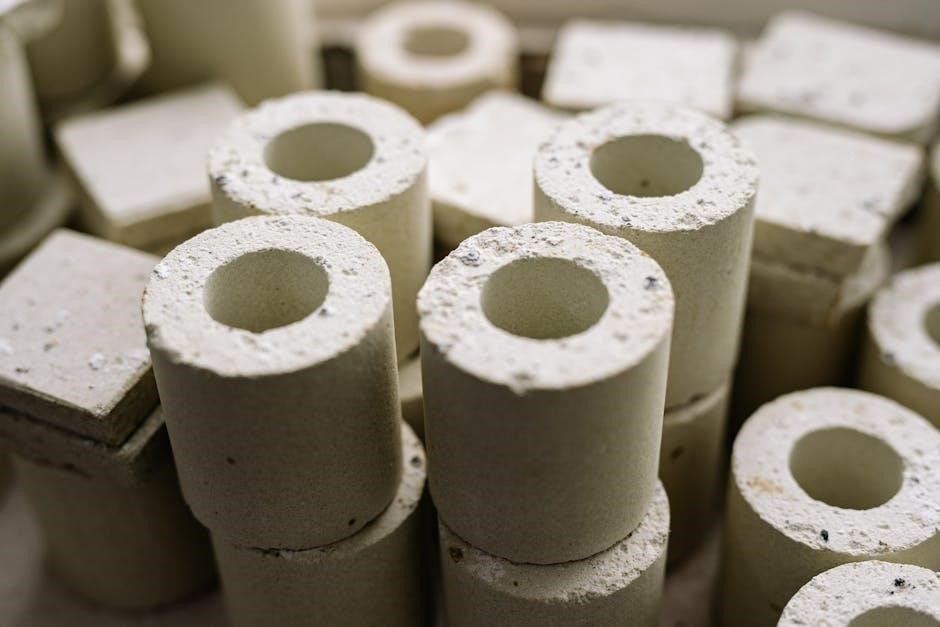Welcome to the FFXI RDM Gear Guide! This comprehensive guide is designed to help Red Mages optimize their equipment for various roles, ensuring maximum efficiency in both magic and melee combat․ Whether you’re focusing on enfeebling, enhancing, or dual-wielding, this guide will provide you with the best gear recommendations to elevate your gameplay․
Understanding the Role of a Red Mage
Red Mages (RDM) are often described as the “Jack of All Trades” in Final Fantasy XI, excelling in multiple roles but not surpassing specialists in any single area․ They can cast White Magic for healing, Black Magic for nuking, and engage in melee combat with swords or daggers․ RDMs also specialize in Enfeebling Magic, which debuffs enemies to gain a strategic advantage․ Their versatility makes them invaluable in parties, as they can adapt to various situations, from dealing damage to supporting allies․ However, this versatility requires careful gear selection to ensure effectiveness across all roles․ Balancing magic and melee capabilities is crucial for maximizing an RDM’s potential․

Importance of Gear in Maximizing RDM Potential
Gear plays a pivotal role in unlocking a Red Mage’s full potential, as it directly impacts their ability to perform multiple roles effectively․ Whether focusing on enfeebling magic, enhancing spells, or melee combat, the right equipment enhances accuracy, reduces recast times, and boosts overall efficiency․ For instance, gear with autorefresh ensures continuous MP replenishment, while pieces with enfeebling magic skill boosts improve debuff effectiveness․ Additionally, weapons and armor tailored to specific playstyles, such as evasion-tank or hybrid setups, allow RDMs to adapt to various combat scenarios․ Investing in optimal gear ensures that a Red Mage remains a versatile and valuable asset to any party or solo endeavor․

Core Gear Sets for RDM
Core gear sets for RDM focus on balancing magic and melee capabilities, with key pieces like Nyame equipment and other essentials providing enhanced stats for casting and combat efficiency․
Head Gear: Nyame Helm and Alternatives
The Nyame Helm is a cornerstone of RDM gear, offering autorefresh and significant enfeebling magic skill boosts, making it indispensable for optimizing debuffs like sleep and gravity․ While the Nyame Helm is the top choice, alternatives like the Enkelados Mask provide excellent magic accuracy for casting precision, and the Marduk Sallet excels in evasion-focused builds․ These options ensure versatility for different playstyles, whether prioritizing magic potency or survivability․ Always consider your role and content when selecting head gear, as each piece offers unique benefits tailored to specific scenarios․
Body Gear: Nyame Mail and Other Options
The Nyame Mail stands as a vital piece for RDM, enhancing enfeebling magic skill and providing autorefresh, which is crucial for maintaining debilitating spells․ While the Nyame Mail is the top choice, alternatives like the Enkelados Harness offer superior magic accuracy, ideal for precise spellcasting․ The Marduk Dastanas provide excellent evasion bonuses, making them a strong pick for evasion-focused builds․ These options allow for flexibility, ensuring you can adapt to different playstyles and content demands․ Always prioritize gear that aligns with your role, whether it’s maximizing enfeebling potency or enhancing survivability through evasion․
Hand Gear: Nyame Gauntlets and Enhancing Magic Accessories
The Nyame Gauntlets are a cornerstone for RDM, offering autorefresh and significant enfeebling magic skill boosts, making them indispensable for maintaining debilitating spells like Sleep and Gravity․ These gauntlets ensure consistent refresh without relying on spells, freeing up MP for other critical abilities․ For enhancing magic, accessories like the Enkelados Gloves or Marduk Dastanas provide excellent boosts to enhancing magic skill, crucial for spells such as Haste or Protect․ These options allow RDMs to excel in both enfeebling and enhancing roles, ensuring versatility in any scenario․ Opting for these hand gear pieces enhances overall magical proficiency and adaptability, making them essential for any RDM build․
Leg Gear: Nyame Flanchard and Movement Speed Optimization
The Nyame Flanchard is a critical piece of gear for RDMs, offering exceptional enhancing magic skill and MP, making it ideal for spellcasting roles․ Paired with movement speed-boosting gear, such as the 1000 TP Bonus from Thibron, RDMs can optimize their mobility for both combat and exploration․ Swapping to speed-enhancing leg gear like the Swift Belt or Goblin Shank when out of combat ensures faster traversal of Vana’diel․ This dual approach allows RDMs to excel in both magical and physical roles, maintaining versatility and effectiveness in any situation․ The Nyame Flanchard stands out as a cornerstone for enhancing magic, while speed-optimized gear ensures RDMs remain agile and responsive․

Weapons and Weapon Skills for RDM
Red Mages excel with versatile weapon options, including swords, clubs, staves, and daggers․ This section covers weapon skills, accuracy, and strategies for dual-wielding, enfeebling, and burst damage․
Swords: Recommended Options for Melee and Magic accuracy
Swords: Recommended Options for Melee and Magic Accuracy
Swords are a cornerstone of RDM weaponry, offering a balance between melee prowess and magic accuracy․ The Naegling stands out as a top-tier choice, providing exceptional attack and accuracy stats, making it ideal for both melee and magic-based playstyles․ For lower levels, the Wax Sword is a reliable option, offering early-game accuracy boosts․ As you progress, upgrading to weapons like the Almace or Murgleis can enhance your performance in both combat and casting․ These swords not only improve your melee damage but also complement your enfeebling and enhancing magic skills, ensuring versatility in any situation․ Weapon skills like Savage Blade further amplify their effectiveness, making swords a staple in any RDM’s arsenal․

Clubs: Utility and Enfeebling Magic Focus
Clubs are an excellent choice for Red Mages, particularly for their utility in enfeebling magic and skill enhancements․ The Thibron club is highly recommended for its enfeebling magic bonuses, making it a staple for debuffing enemies effectively․ Additionally, the Sequence club offers a balance of magic accuracy and attack speed, which is beneficial for maintaining consistent enfeebling effects․ Clubs like these are often paired with complementary gear, such as Nyame hands, to further enhance enfeebling magic skill and accuracy․ While they may not excel in raw damage output, their utility in controlling and debilitating enemies makes them indispensable for RDMs focusing on enfeebling and support roles․

Staves: Earth Staff and Magic Enhancement
The Earth Staff stands as a cornerstone for Red Mages, particularly at level 51, offering exceptional magic enhancement capabilities․ Its high enhancing magic skill bonus makes it ideal for spells like Refresh and Haste, ensuring optimal magic performance․ This staff is particularly beneficial for RDMs focusing on enhancing magic, as it amplifies the effects of key spells․ When paired with complementary gear like the Nyame helm or gauntlets, the Earth Staff significantly boosts enhancing magic efficiency, making it a must-have for any RDM aiming to excel in support roles․ While other staves like the Murgleis or Almace offer unique benefits, the Earth Staff remains unparalleled for its pure enhancing magic prowess․
Daggers: Precision and Dual-Wield Strategies
Daggers are a versatile weapon choice for Red Mages, excelling in precision and dual-wield setups․ Dual-wielding daggers enhances attack speed and critical hit rates, making it ideal for melee-focused RDMs․ The Leth Houseaux dagger is a standout option, offering superior accuracy and critical hit bonuses․ When paired with complementary gear like the Nyame gauntlets, dual-wielding daggers becomes even more effective, allowing RDMs to maintain high melee damage output while still contributing with magic․ This strategy is particularly useful in hybrid playstyles, where both physical and magical capabilities are utilized․ The precision and swiftness of daggers make them a cornerstone in any RDM’s arsenal, ensuring adaptability in various combat scenarios․

Accessories for RDM
RDM accessories are durable and versatile, enhancing magic accuracy, evasion, HP, MP, and enfeebling magic skill, ensuring adaptability in various combat scenarios․
Earrings: Magic Accuracy and Evasion Boosts
Earrings are a critical component of an RDM’s gear, offering significant boosts to magic accuracy and evasion․ The Moonlight Earring is highly recommended for its exceptional magic accuracy, making it ideal for enfeebling and enhancing magic․ For evasion-focused builds, the Orpheus’s Earring provides excellent evasion boosts while maintaining decent magic accuracy․ Both pieces are versatile and can be used across various playstyles․ These earrings ensure that Red Mages can effectively manage their magical and physical evasion capabilities, making them indispensable in both offensive and defensive scenarios․ Prioritizing these accessories will greatly enhance your overall performance in Vana’diel․
Necklaces: HP and MP Management
Necklaces play a vital role in managing an RDM’s HP and MP, ensuring optimal performance in demanding situations․ The Convertors Necklace is a top choice, offering MP conservation through its Convert effect, which is invaluable for maintaining mana during prolonged battles․ For HP-focused builds, the Erra Pendant provides a significant boost to health, enhancing survivability․ These necklaces are essential for balancing resource management, allowing Red Mages to sustain their magical and physical capabilities․ By equipping the right necklace, players can adapt to various combat scenarios, ensuring they remain effective in both offensive and defensive roles throughout their adventures in Vana’diel․
Rings: Enfeebling Magic Skill and Attack Bonuses
Rings are crucial for enhancing an RDM’s enfeebling magic skill and attack capabilities․ The Stikini Ring and Rajas Ring are top choices, as they significantly boost enfeebling magic skill, ensuring higher success rates for spells like Sleep and Bind․ Additionally, rings like the Flame Ring and Ice Ring provide elemental attack bonuses, improving melee damage output․ These accessories are versatile, allowing Red Mages to adapt to both magical and physical combat scenarios․ By equipping the right rings, players can enhance their enfeebling magic effectiveness while maintaining strong melee capabilities, making them indispensable in various battlefield roles․

Enfeebling Magic Skill Optimization
The crown jewel of RDM gear combines autorefresh with a significant boost in enfeebling magic skill, ensuring constant effects like Sleep, Bind, or Gravity remain active․ Always prioritize this gear for optimal debuffing performance in any scenario․
Key Gear Pieces for Enfeebling Magic
Optimizing enfeebling magic requires specific gear that enhances magic accuracy and skill․ The Nyame Helm and Nyame Mail are crucial, offering significant enfeebling magic boosts․ Additionally, weapons like the Earth Staff or daggers with magic accuracy bonuses are ideal․ Accessories such as the Orpheus’s Earring and Anwig Salmonoid Ring further enhance magic accuracy and enfeebling effectiveness․ Combining these pieces ensures consistent landing rates for critical spells like Sleep, Bind, and Gravity․ Prioritizing gear with autorefresh and skill boosts allows Red Mages to maintain enfeebles effortlessly, making them indispensable in parties․ This focus on enfeebling optimization ensures RDMs can reliably control and disable enemies, maximizing their utility in any situation․
Combining Autorefresh and Magic Skill Boosts
Combining autorefresh and magic skill boosts is a cornerstone of effective RDM play․ Gear like the Nyame Helm, Nyame Mail, and Nyame Gauntlets provides autorefresh, reducing MP costs and maintaining enfeebling magic uptime․ Accessories such as the Orpheus’s Earring and Anwig Salmonoid Ring enhance magic accuracy and enfeebling skill, ensuring spells land reliably․ This setup allows Red Mages to maintain critical enfeebles like Sleep, Bind, and Gravity without interruption․ The synergy between autorefresh and skill boosts maximizes RDM versatility, enabling them to excel in both magic and melee roles while conserving resources․ This combination is essential for optimizing RDM performance in high-level content and dynamic party situations․

Playstyle-Specific Gear
Playstyle-specific gear allows RDMs to adapt to diverse roles, from evasion-style tanking with high-evasion armor to melee-focused setups with attack-boosting equipment, optimizing versatility in any scenario․
Evasion-Style Tank Gear
Evasion-style tank gear focuses on maximizing evasion and agility to avoid attacks while maintaining enfeebling and enhancing magic capabilities․ Key pieces include high-evasion armor like the Nyame Flanchard, which provides movement speed and evasion bonuses․ Accessories such as Evasion Boost earrings and Rings with enfeebling magic skill bonuses are essential for maintaining durability and effectiveness․ This setup allows RDMs to serve as evasion-style tanks in certain content, leveraging their versatility to avoid damage while supporting allies․ The combination of evasion and magic-enhancing gear ensures RDMs remain resilient and potent in both offense and defense, making them invaluable in dynamic battle scenarios․
Melee-Focused Gear for Hybrid Play
For a melee-focused hybrid playstyle, Red Mages should prioritize gear that enhances attack power, accuracy, and dual-wield capabilities while maintaining some magical proficiency․ Swords like the Almace or Naegling are excellent choices for their high attack power and versatility․ Dual-wielding daggers, such as the Sequence Dagger, can amplify melee damage further․ Accessories like the Sword Strap or Enspell Damage rings boost melee accuracy and enspell effectiveness․ Additionally, gear with high attack bonuses and critical hit rate enhancements ensures consistent damage output․ This setup allows RDMs to excel in close-range combat while still supporting allies with magic, making them versatile hybrid characters in any party setup․

Advanced Gear Strategies
Advanced gear strategies for RDM involve optimizing equipment swaps for specific roles, leveraging autorefresh and enhancing magic gear․ Enspell damage is recalculated per attack, requiring skill-boosting accessories․ Gear with attack bonuses and critical hit rates enhances melee efficiency, while enfeebling-focused items improve debuff effectiveness․ Swapping gear mid-battle ensures adaptability, making RDMs versatile in dynamic content․ This approach maximizes efficiency in both magic and melee scenarios, ensuring optimal performance․
Swapping Gear for Different Roles
Swapping gear for different roles is crucial for RDMs, as their versatility demands adaptability․ For healing, prioritize gear with high MP, magic accuracy, and enhancing magic bonuses․ When focusing on melee, switch to weapons and armor that boost attack, critical hit rate, and evasion․ For enfeebling magic, equip items that enhance enfeebling skill and magic accuracy․ Additionally, when acting as an evasion-style tank, opt for gear with high evasion and defense bonuses․ Swapping gear mid-battle ensures optimal performance in dynamic situations․ Organizing gear sets by role allows for quick adjustments, making RDMs highly effective in any scenario․ This strategy maximizes their jack-of-all-trades potential․
Utilizing Enspell Damage and Enhancing Magic Gear
Enspell damage and enhancing magic gear are essential for RDMs to maximize their magical output․ Enspells, like Fire, Ice, and Thunder, boost elemental weapon skills, making them powerful tools in battle․ Enhancing magic gear, such as the Nyame set, provides bonuses to enhancing magic skill and duration, ensuring buffs like Haste and Protect last longer․ Combining these with magic attack and accuracy gear enhances spell potency․ Additionally, tier II Enspell damage recalculates every attack round, requiring high enhancing magic skill from gear․ This setup allows RDMs to deal consistent elemental damage while maintaining strong magical support, making them invaluable in parties․ Optimizing this gear ensures peak performance in both offensive and supportive roles․










